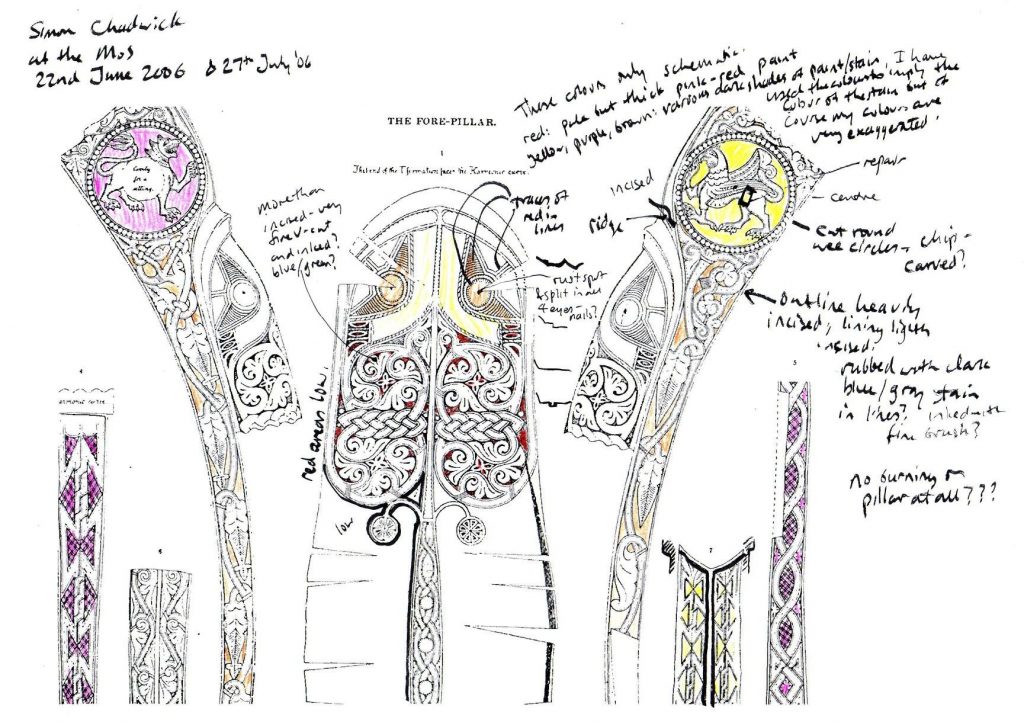Karen Loomis discovered the presence of mercury in the red pigment on the Queen Mary harp, when she did X-ray fluorescence analysis in 2010. This pretty much confirms that the pigment is vermilion, a mercury sulphide compound.
Karen reported that only the pigment on the curved body of the fish on the forepillar indicated mercury; the pigment on the flat panels of the forepillar contained no mercury. A rendering of the CT-scan data printed in her Galpin Society Journal article (vol LXV, 2012, p.166) shows high-density spots in the crevaces between the interlace of the fish shoulders, and also around the fish eye.
As soon as Karen told me about this I thought of re-painting my replica. When Davy was making it for me in 2006-7, we did the colour scheme based on an impressionistic view of the surviving pigment – I took a line drawing of all the decoration in to the Museum, and hand-coloured the sheet according to what I could see on the harp.

I got some genuine vermillion paint some time ago, for a commissioned luxury tuning key. And I thought then, that I should perhaps re-paint my harp.
For a long time though, I held off, partly thinking that the purplish paint Davy had used looked nice, partly that it was his art work, and partly worrying about doing something so irreversible and drastic.
But yesterday I felt emboldened and I painted all the crevaces between the fish foliage with vermilion paint.
The harp looks shocking with flaming orange glowing behind the foliage, like a lantern with tracery.

I think my painting is less neat than Davy’s. I have taken the colour higher up the relief carving than he did, which makes it more boldly coloured but also slightly less neat.
But I think I am happy with it… I can always scrape a little away from the edges of the relief carving to neaten it up once it has started setting.
I looked at Karen’s close-up photos of the traces of polychrome painting on the animal roundels and the foliage on the flat pillar sides. I wonder if I will ever dare to tackle these? Her analysis didn’t sample these pigments, except for the dull red on the outside of the bottom of the pillar, which looked like some kind of iron compound, presumably an iron oxide red. Perhaps I’ll wait on more X-ray fluorescence analysis of the other pigment traces before committing…
